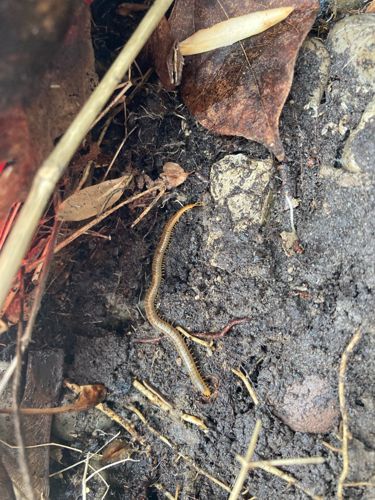Millipede
Scientific Name: Diplopoda (Class)
Order & Family: Varies widely (e.g., Polydesmida, Julida)
Size: Most millipedes range from 0.5 to 10 cm (0.2 to 4 inches) in length, though some tropical species can exceed 30 cm (12 inches).

Natural Habitat
Typically found in damp, dark environments such as under leaf litter, decaying logs, rocks, and soil, in forests, gardens, and other terrestrial habitats.
Diet & Feeding
Primarily detritivores, feeding on decaying organic matter such as dead leaves, decaying wood, and other plant debris. Some species may occasionally consume fungi or small amounts of living plant matter.
Behavior Patterns
Millipedes are generally slow-moving, nocturnal creatures. When disturbed, many species coil into a tight spiral or release foul-smelling fluids (often containing hydrogen cyanide) as a defense mechanism to deter predators. They undergo a series of molts, adding segments and legs with each stage, until they reach maturity.
Risks & Benefits
Risks: While generally harmless to humans, some species can secrete irritating or staining fluids when handled, which can cause skin irritation or eye discomfort if touched. They are not known to bite. Benefits: Millipedes are crucial decomposers in ecosystems, breaking down organic matter and returning nutrients to the soil, thus improving soil fertility and structure. They play an important role in the nutrient cycle.
Identified on: 9/21/2025